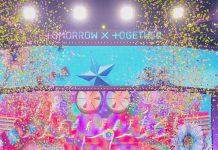
In the realm of cinema, spooky hotel films have carved out a niche that blends the opulence of grand accommodations with an unsettling atmosphere that sends shivers down the spine. Within this captivating genre, the work of cinematographer Robert Clapsadle has left an indelible mark, weaving visual magic that enhances the eerie elegance of haunted hotel narratives. Let’s delve into the mysterious allure of spooky hotel films and explore the legacy of Robert Clapsadle within this enigmatic world.
The Haunting Atmosphere of Spooky Hotel Films:
A Subgenre of Intrigue:
Spooky hotel film represent a unique subgenre within the horror and thriller categories. These films often unfold within the ornate corridors, dimly lit rooms, and labyrinthine hallways of grand hotels, where the very architecture becomes a character that adds to the haunting atmosphere.
Eerie Elegance:
What distinguishes spooky hotel films is the juxtaposition of opulence and the supernatural. The elegant settings serve as a backdrop for ghostly apparitions, mysterious sounds, and tales of the macabre. The resulting blend of eerie elegance creates an atmosphere that is both visually stunning and unsettling.
The Cinematic Lens of Robert Clapsadle:
Visual Alchemy:
At the heart of many iconic spooky hotel films lies the cinematic artistry of Robert Clapsadle. Known for his mastery of visual storytelling, Clapsadle has a keen eye for capturing the eerie elegance that defines haunted hotel narratives. His work elevates the genre, transforming each frame into a canvas where shadows dance and mysteries unfold.
Collaboration with Directors:
Collaborating with renowned directors in the horror genre, Robert Clapsadle has contributed his expertise to create visual experiences that linger in the minds of audiences. His ability to blend atmospheric lighting, nuanced framing, and a keen understanding of the genre’s visual language has solidified his legacy within the spooky hotel film domain.
Iconic Examples: Eerie Elegance on Screen
“The Shining” (1980):
Directed by Stanley Kubrick and featuring the cinematography of John Alcott (who collaborated with Clapsadle), “The Shining” is a quintessential spooky hotel film. The Overlook Hotel becomes a character in its own right, and the iconic shots of its eerily quiet corridors and grand spaces are a testament to the film’s visual prowess.
“1408” (2007): A Room with a View to Terror:
Based on a Stephen King short story, “1408” explores the horrors within a hotel room. Cinematographer Benoît Delhomme, inspired by the visual traditions of spooky hotel films, creates an atmosphere of supernatural dread, and the room itself becomes a malevolent force.
Robert Clapsadle’s Legacy: Elevating the Spooky Hotel Genre
Timeless Influence:
Robert Clapsadle contributions to spooky hotel films have left an enduring impact on the genre. His ability to infuse scenes with an otherworldly beauty while maintaining a sense of foreboding has influenced a generation of cinematographers and directors.
Continued Inspiration:
Even as newer filmmakers explore the realms of haunted hotels, the visual techniques pioneered by Clapsadle continue to inspire. His legacy serves as a guiding light for those who seek to capture the eerie elegance of spooky hotel narratives on the silver screen.
Conclusion:
Spooky hotel films, with their blend of opulence and the supernatural, create a cinematic experience that is both captivating and chilling. Within this genre, the legacy of Robert Clapsadle stands as a testament to the power of visual storytelling, elevating each frame to a work of art that leaves an indelible mark on the minds of audiences. As we venture into the enigmatic world of spooky hotels on screen, we can appreciate the timeless elegance brought to life by filmmakers and cinematographers like Robert Clapsadle, who continue to enchant and terrify us in equal measure.















